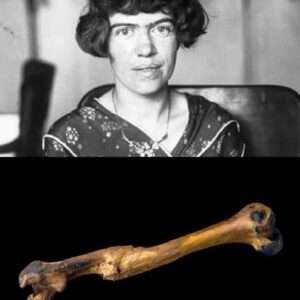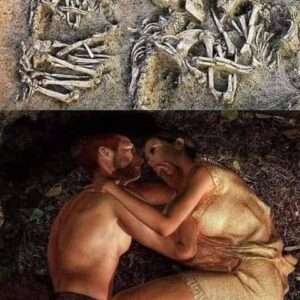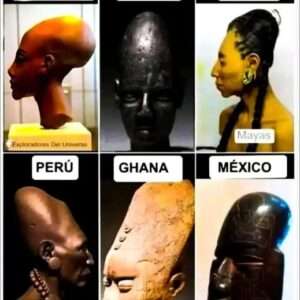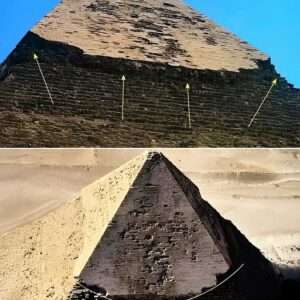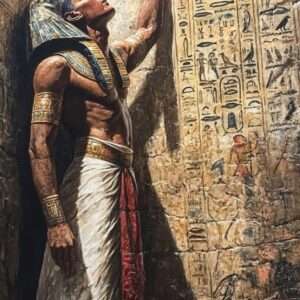In a groundbreaking discovery that has left archaeologists and historians astounded, an ancient priest’s tomb has been uncovered just a stone’s throw away from the iconic Great Pyramid of Giza. This remarkable find offers a rare glimpse into the rich tapestry of Egypt’s bygone era, akin to embarking on a voyage through a time machine.
The gaping hole that now stands before us is no ordinary or random orifice; it serves as a burial shaft that leads directly to the chambers where revered priests were laid to rest alongside an array of priceless artifacts. With origins dating back to approximately 2500 BC, these tombs serve as portals to a world where religious rituals and cultural customs intertwined in a symphony of ancient traditions.

As we stand on the precipice of this archaeological marvel, we are transported back in time to an era that continues to captivate our collective imagination. The meticulously preserved artifacts and intricate hieroglyphics that adorn the walls of the tomb reveal a civilization that was steeped in mystique and grandeur.
Through the lens of this extraordinary discovery, we are granted a front-row seat to the religious practices and societal norms that defined ancient Egypt. The insight gleaned from these hallowed halls sheds light on a civilization that, despite the passage of millennia, remains shrouded in mystery and awe.
Each artifact unearthed from the depths of these tombs serves as a testament to the ingenuity and craftsmanship of a civilization that reigned supreme in the annals of history. From ceremonial relics to intricately crafted vessels, every object tells a story of a bygone era that continues to resonate with us to this day.
As we delve deeper into the recesses of this ancient priest’s tomb, we are reminded of the enduring legacy of a civilization that has etched its mark on the sands of time. The echoes of the past reverberate through the chambers, inviting us to immerse ourselves in a world that once was – a world steeped in tradition, mystery, and wonder.
In conclusion, the unearthing of this ancient priest’s tomb near the Great Pyramid of Giza is nothing short of a revelation. It affords us a rare opportunity to peer into the annals of history and unravel the enigmatic tapestry of Egypt’s storied past. Prepare to be enthralled, for the journey that awaits is nothing short of spectacular.
